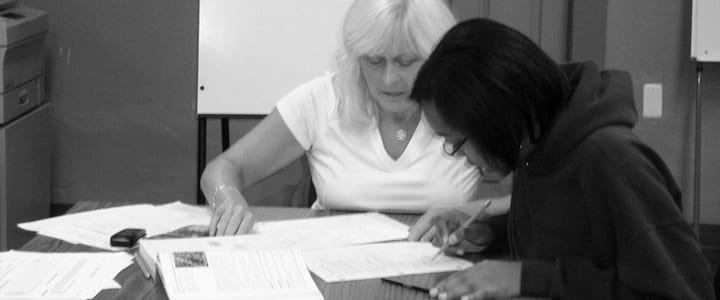
It’s common for beginner students to be intimidated when learning how to write in German. From complex grammar to unfamiliar punctuation, there’s a wide variety of rules you must keep in mind. Nonetheless, it’s important that you master German writing skills if you wish to be successful in the long run.
When tasked with writing in German, your first instinct might be to write a sentence in English and then translate it into German using an online resource. Doing so, however, will just stifle your German writing skills and hinder your success. What’s more, translation programs don’t always properly translate sentences. To help you learn the proper way to write in German, use the following three tips and tricks:
1. Capitalization
In the German language, all nouns are capitalized no matter where they appear in a sentence. For example, in the sentence, “Die Katze geht durch die Tür” (the cat walks through the door), the nouns cat and door are both capitalized. What’s more, adjectives describing nationality, ethnicity, and religion are not capitalized, whereas in English they are.
2. Punctuation
Luckily, most punctuation marks are used the same in German as they are in English with the exception of a few. In the English language, for example, the typical format for introducing a quote is (“___”). In German, however, chevron-style marks (also used in French) and colons are used to introduce a quote. See example below:
- English: They said, “The dog ran away.”
- German: Sie sagten: »Der Hund weggelaufen.«
Punctuation at the end of a quote also differs. In German, the comma is placed outside the quotation marks, whereas in English the comma in placed inside the quotation marks. See example below:
3. Sentence Structure
When writing in English, the subject is placed first in a main clause. For example, in the sentence, “The dog catches the ball,” the subject (dog) is placed before the verb (catches) and the object (ball). In German, however, you can either put the subject or the object first. This is because you can oftentimes tell if a noun or pronoun is being used as the subject or object in a sentence. Let’s say, for instance, you want to write the same sentence above in German. You can either do it with the subject or the object first. See example below:
- English: The dog catches the ball.
- German: Der Hund fängt den Ball. (The dog catches the ball)
- German: Den Ball fängt der Hund. (The ball catches the dog)
These are just a few tips and tricks to remember when writing German. It’s important to keep in mind that there are a lot of rules you must absorb. If you’re struggling to master your German writing skills, then you might want to consider taking private German lessons with an expert teacher who can work with you on some of the more difficult rules.
Photo by NJLA: New Jersey Library Association
Brooke Neuman

